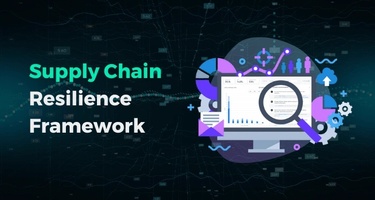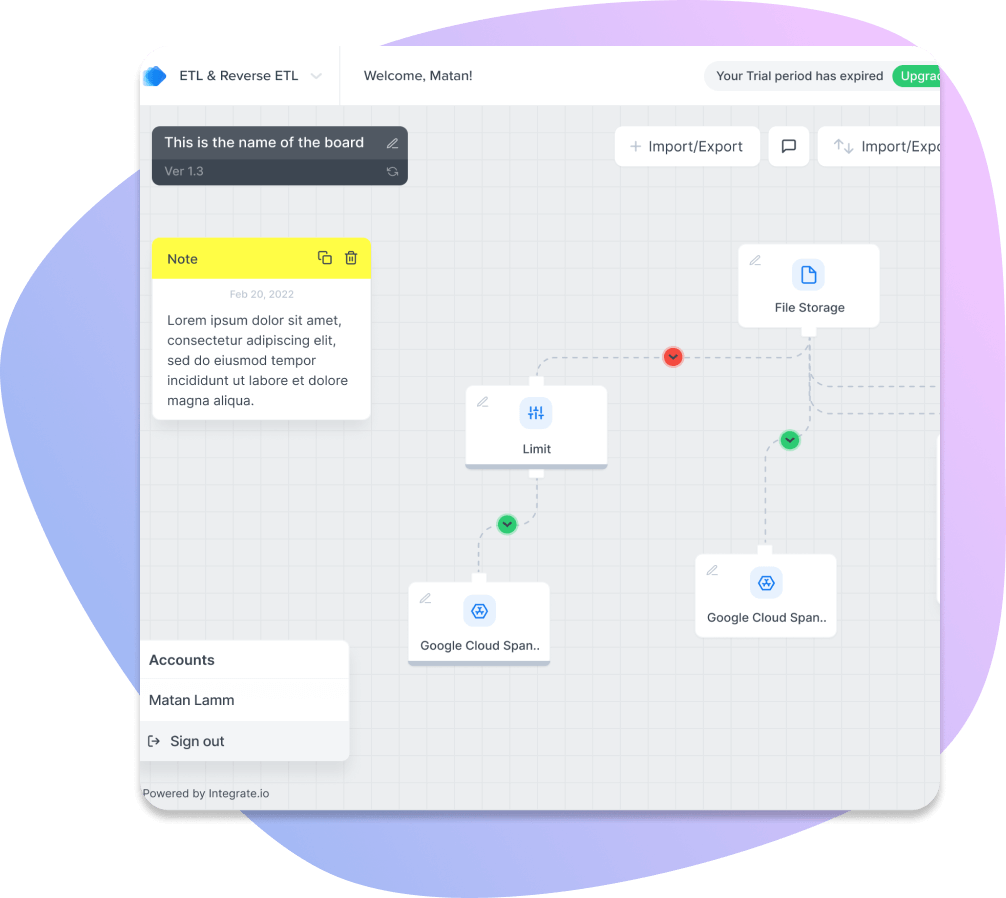- Why Is Resilience Important in Supply Chain Management?
- Why Is Data Integration Important in Supply Chain Management?
- Why You Need a Resilient Supply Chain in a Recession
- How Data Integration Improves Supply Chain Resilience
- Different Data Integration Methods for Supply Chain Resiliency in a Recession
During uncertain economic times, the resilience of a supply chain becomes paramount for businesses facing a multitude of challenges, such as dwindling product demand, supplier bankruptcies, and soaring costs of equipment and raw materials. In these critical moments, the power of data integration emerges as a vital force, enabling companies to dismantle data silos, harness the potential of data analytics within production processes, and foster seamless information sharing with manufacturing partners. By consolidating data from diverse sources into a centralized repository like a data warehouse, organizations can forge a single source of truth that permeates their supply chains, fortifying their ability to weather any economic storm that comes their way.
As we delve into the depths of supply chain management, it becomes increasingly clear that data integration stands as a linchpin in this intricate ecosystem, especially during potential recessions.
Five things you need to know about data integration and supply chain resilience during a recession
- An economic downturn can impact your supply chain by reducing product demand, increasing the cost of materials, and decreasing revenue.
- Making your supply chain more resilient lets you navigate a potential recession and allows you to continue business operations. Creating a supply chain resilience framework will help you prepare for future events that might impact your business.
- Integrating data from different sources into a centralized location lets you view your production workflows in one place, helping you make more informed supply chain management decisions.
- One of the easiest ways to integrate data for supply chain resiliency is via the ETL process, which seamlessly extracts, transforms, and loads data into a central repository.
- Data integration requires complex code and data engineering. However, the right tools can streamline this process and make moving data between locations more successful.
In this article, we will explore the significance of data integration for fostering supply chain resilience and discuss key insights and strategies to help organizations navigate and thrive in challenging economic landscapes.
Why Is Resilience Important in Supply Chain Management?
A resilient supply chain helps you quickly adapt to events that might impact your production workflows, such as a pandemic or recession. By making your supply chain more resilient, you can reduce the impact of these adverse conditions on your operations and finances and continue to grow your business.
Why Is Data Integration Important in Supply Chain Management?
Integrating data into a centralized repository provides a 360-degree overview of your supply chain management processes. For example, you can identify areas of your supply chain that need improving to withstand the current economic downturn. That will make your supply chain more resilient in a potential recession.
Why You Need a Resilient Supply Chain in a Recession
Supply chain resiliency involves making your production workflows more resistant to various business challenges. These challenges might include internal disruptions such as poor managerial decisions or external conditions such as natural disasters, geopolitical factors, and a recession.
Improving supply chain resiliency during an economic downturn is critical because so many things can impact your business operations. Changing consumer behaviors brought on by a recession, for example, might result in reduced demand for your products, leading to a sales slump. Inflation, increased costs of raw materials, staff shortages, and difficulties obtaining finance can also prevent your business from growing.
Making your supply chain more resilient to external conditions involves many processes. For example, creating a contingency plan will help you continue operations if you experience a drop in sales or can't afford materials. Whatever you do to improve supply chain resiliency, you can avoid disruptions from impacting your production processes.
Developing a supply chain resilience framework can reduce disruption brought on by a recession and help you overcome any financial challenges and manufacturing inefficiencies. Your framework will detail how to identify external risks to your supply chain and mitigate these risks. For example, you can outline the ways to lessen the impact of inflation on manufacturing, such as choosing cheaper suppliers or raising the cost of your products. Alternatively, you can recover quickly from supplier bankruptcies by diversifying your providers.
How Data Integration Improves Supply Chain Resilience
Data integration involves moving data from different sources to a centralized location, primarily for data analysis. These sources include:
- Warehouse management systems
- Enterprise resource planning (ERP) systems
- Customer relationship management (CRM) systems
- Supply chain planning (SCP) systems,
- Other software and apps are used to manage your production workflows.
After moving data from these systems to a data warehouse, for example, you can view all your supply chain data in one place and make smarter decisions. That will help make your entire supply chain ecosystem more resilient during the current economic landscape. Here are some ways data integration improves supply chain resiliency:
Analyze trends and patterns in supply chain data
A central repository like a data warehouse that integrates data serves as a single source of truth for supply chain information, making it easier to push that information through business intelligence (BI) platforms like Looker and Tableau. These platforms generate data visualizations about your supply chain, such as reports and dashboards, so you can quickly analyze trends and patterns that might impact your manufacturing workflows. For example, you can learn whether the rising cost of raw materials will impact your bottom line and identify new ways to save money in your business. Some BI platforms use artificial intelligence and machine learning to generate real-time metrics that improve supply chain visibility and identify potential supply chain disruptions.
Predict future outcomes of your business
Planning ahead in an economic downturn is critical. After integrating data and running it through BI platforms, you can make predictions about your supply chain and how external factors might impact your ability to manufacture products. Tools like Tableau and Microsoft Power BI generate predictive analytics, which forecast the likelihood of adverse events occurring (like labor shortages) by analyzing historical data trends. By predicting the future, you can strengthen your supply chain by removing bottlenecks from production processes and preparing your business for worst-case scenarios.
Real-time monitoring
During a recession, you need real-time insights into your supply chain. Otherwise, you will be relying on old information when making decisions about the financials of your business. Moving data to a central repository allows you to generate up-to-the-minute intelligence about every aspect of supply chain management, such as logistics, transportation, product procurement, process automation, inventory management, and customer service. That means you have the latest information when navigating your business through an economic downturn.
Create a contingency plan
With all these data insights at your fingertips, you can create a contingency plan for continuing business operations in an adverse economic event. For example, you can use data generated by BI tools to assess the short-term and long-term risks associated with a recession and reduce your workforce or switch to a cheaper supplier to conserve funds. You can also downsize the production of certain products if consumer demand for those items declines.
Different Data Integration Methods for Supply Chain Resiliency in a Recession
Now you know the benefits of data integration for modern supply chains during a recession, how do you move data from different sources to a centralized repository? Here are some data integration methods for creating a more resilient supply chain:
Extract, Transform, Load
Extract, Transform, Load (ETL) is a data integration method that seamlessly moves data from disparate sources to a data warehouse or other repository via big data pipelines. You can extract data from a source like an ERP system, transform the data into the correct format for data analysis, and load it to a warehouse such as Snowflake, Google BigQuery, or Amazon Redshift. At this point, you can run your newly-formated data through a BI platform of your choice and improve decision-making, optimize supply chain operations, and reduce supply chain risk.
Typically, ETL requires a data engineer to build a data pipeline that moves data from one location to another, which can be expensive, especially if you are trying to save funds during a recession. No-code data pipeline platforms like Integrate.io let you ETL data from a source to a central repository without any programming experience, saving money. Integrate.io creates no-code ETL and reverse ETL pipelines in minutes, letting you prepare and transform data without any data engineering knowledge via a powerful drag-and-drop interface.
Extract, Load, Transform
Extract, Load, Transform (ELT) is another data integration method that moves data from supply chain systems in your organization to a central repository. Most commonly used to sync data with a data lake, ELT reverses the "load’" and "transform"’ stages of ETL, meaning transformations occur within the central repository itself.
Like ETL, ELT requires complex code and data engineering experience. However, Integrate.io streamlines these processes by allowing you to connect data sources with a data lake via pre-built data connectors. Integrate.io offers the industry’s fastest ELT data replication service and unifies data every minute for a single source of truth for reporting. The no-code data pipeline platform also performs Change Data Capture (CDC), which instantly recognizes changes made to a data source like a database.
Whether you choose ETL, ELT, or another data integration method for supply chain resilience, you must recognize the challenges of integrating data from one location to another. These challenges include ensuring data quality as information moves between a source and a central repository. Duplicated data sets, inaccurate data, and outdated data can all impact analytics and result in poor visibility of your supply chain processes.
Another issue is data governance, with legislation like GDPR and CCPA influencing how you process data and transfer it to different locations. Choosing the right digital technologies for data integration (and incorporating them into your supply chain resilience framework) will make sure you improve data quality and comply with data governance laws in your industry or region.
How Integrate.io Can Help You Optimize Your Supply Chain
Data integration via processes like ETL and ELT can improve supply chain resilience during a potential recession. You can analyze trends and patterns in supply chain data, monitor supply chain data in real-time, predict future business outcomes, and create a contingency plan for continuing business operations. Integrating data can also help you manage supply chain issues, improve supply chain agility, and enhance supply chain performance across your entire business model.
Integrate.io is the no-code data pipeline that automates data integration for supply chain resilience. Its no-code data connectors let you move data between a data source and a central repository in mere minutes, allowing you to run data sets through BI tools for real-time insights. That helps you make better decisions during an economic downturn. Incorporating Integrate.io into your supply chain strategy provides a single source of truth about your manufacturing workflows, making it easier to identify risks that might impact your business.
As well as performing ETL, Reverse ETL, ELT, and CDC, Integrate.io provides data observability monitoring and alerts, helping you improve data quality. You can also automate REST API code and instantly read and write API generation, which powers your data products.
Take advantage of Integrate.io’s 14-day trial today and get more from your supply chain data. Alternatively, address your unique business use case by scheduling an intro call with one of Integrate.io’s specialists, who will identify your pain points and suggest solutions to your data integration problems.













